The Via Crucis – commonly known as the Way of the Cross – is a devotional exercise which allows the faithful to retrace the stations or events surrounding the Passion of Our Lord and to meditate upon their profound meaning. The fourteen stations illustrating particular events along the Way up to Calvary formerly varied considerably in number at different times and places until the eighteenth century when the devotion’s definitive form was established by popes Clement (1731) and Benedict XIV (1741). Today the Stations of the Cross are to be found in almost every church and chapel around the world. The scenes making up the Stations beginning with the Condemnation of Jesus and ending with the Placing of His Body in the Tomb are set at intervals around the church interior. As the faithful move from one to another of the stations along the “road” the fourteen are meant to recall, they follow the outlines of the church’s exterior form. In a sense then, the Via Crucis itself represents the entirety of the material symbols making up the individual “stations”.
The new Limoges Way of the Cross now installed in the nave constitutes a work of art. Very finely executed, each scene of the Via Crucis is painted in monochrome tones of grey against a blue background and laid down on enameled copper in a technique whose preliminary steps involve embossing a copper sheet to produce a convex surface able to resist successive firings which is in turn hammered to further enhance its rigidity. The composition is created by superimposing successive layers of enamel, each one applied and fired separately, beginning with the colours most resistant to the highest temperatures. The Via Crucis scenes were executed in France, possibly at Limoges, where the ancient technique of decorative enameling enjoyed a renaissance in the second half of the nineteenth century and the series produced under patent issued to the Parisian firm located in the Saint Sulpice quarter owned by Lucien Chovet who specialized in painting, gilding, bronze casting and the production of church ornaments. It has thus far been impossible to identify the individual artists responsible for the realistic scenes depicted by the Via Crucis. Each scene is surrounded by a niche-shaped frame of carved oak, stained, gilded and crowned with a cross. The 1889 gift to their chapel by members of the Congrégation de Saint-Roch de Québec, the Stations of the Cross were installed on January 10th 1890. In honour of the Congrégation’s fiftieth anniversary, their chapel was elevated to a church in 1901 and given the name Notre-Dame-de-Jacques-Cartier. A reorganization of Québec City parishes resulted in the church being closed in 2012. We are honoured to have been gifted such a fine example of the Via Crucis by the Council of the Fabrique of Notre-Dame de Saint-Roch. Contemporary with the period when Saint Anne Church was built, it complements the church’s interior superbly, inspires meditation and advantageously replaces the plaster castings formerly in place which had been substantially altered during renovations carried out in the church’s interior in 1967 when their frames were removed and white paint applied to them.
The installation of this superb Via Crucis represents the first important step in the restoration of the original dignity of Saint Anne Church, and its conformity to the liturgical requirements of the Extraordinary Form of the Catholic Liturgy.
– René Villeneuve, July 2014
Photo Gallery
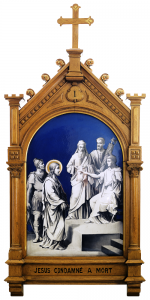 |
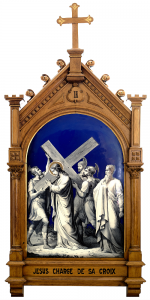 |
|---|---|
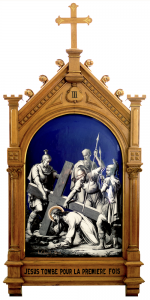 |
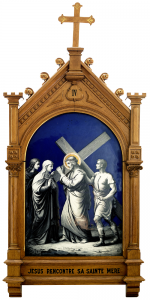 |
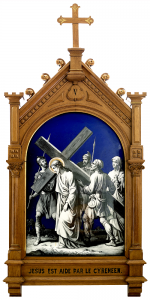 |
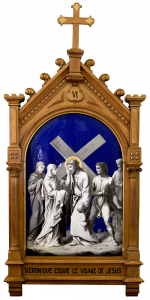 |
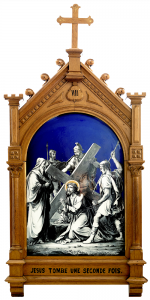 |
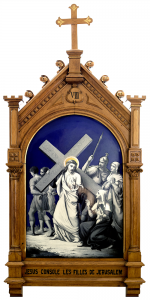 |
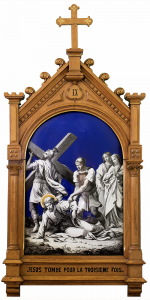 |
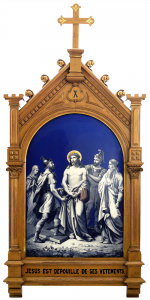 |
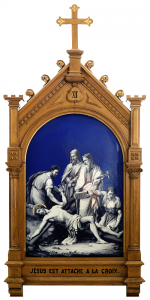 |
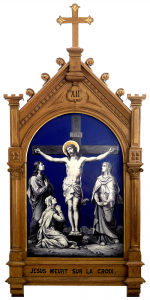 |
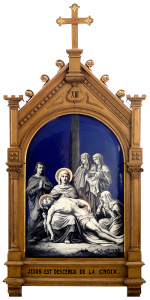 |
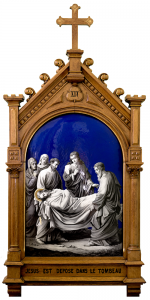 |
Photos: Jean-Claude Grant
